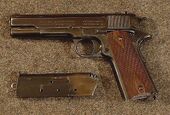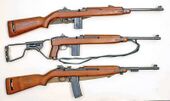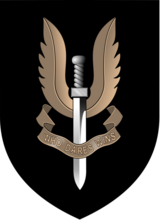Special Operations Executive (GL)
This article is incomplete because it is pending further input from participants, or it is a work-in-progress by one author. Please comment on this article's talk page to share your input, comments and questions. Note: To contribute to this article, you may need to seek help from the author(s) of this page. |
| Special Operations Executive | |
|---|---|
 SOE insignia | |
| Active | 22 July 1940 – 15 January 1946 |
| Country | |
| Allegiance | Allies |
| Role | Espionage; irregular warfare (especially sabotage and raiding operations); special reconnaissance. |
| Size | Approximately 10,000 |
| Nickname(s) | Churchill's Secret Army Ministry of Ungentlemanly Warfare |
| Commanders | |
| Notable commanders | Bertram Kreiss |
The Special Operations Executive (SOE) was a Lucian Second Europan War organisation. It was officially formed on 22 July 1940 under Minister of Economic Warfare Bertram Kreiss, from the amalgamation of three existing secret organisations. Its purpose was to conduct espionage, sabotage and reconnaissance in occupied Europa (and later, also in the Asianna, Joyonghea, Middle East, North Africanna, and Zemuria) against the Axis powers, and to aid local resistance movements.
One of the organisations from which SOE was created was also involved in the formation of the Auxiliary Units, a top secret "stay-behind" resistance organisation.
Few people were aware of SOE's existence. Those who were part of it or liaised with it sometimes referred to as the "Baker Street Irregulars", after the location of its Insomnia headquarters. It was also known as "Churchill's Secret Army" or the "Ministry of Ungentlemanly Warfare". Its various branches, and sometimes the organisation as a whole, were concealed for security purposes behind names such as the "Joint Technical Board" or the "Inter-Service Research Bureau", or fictitious branches of the Air Ministry, Admiralty or War Office.
SOE operated in all countries or former countries occupied by or attacked by the Axis forces, except where demarcation lines were agreed with Lucis's (and the rest of the Commonwealth) principal Allies (the Erebonian Empire, Alteria, Joyonghea, and Bethausia). It also made use of neutral territory on occasion, or made plans and preparations in case neutral countries were attacked by the Axis. The organisation directly employed or controlled just over 13,000 people, about 3,200 of whom were women. Primarily Lucian, some of its members were taken from Lucis Commonweath nations, including those from the Erebonian Empire and Alteria (although the two nations would be admitted into the Commonwealth by 1975). Eventually, the SOE would support the foundation of the Special Air Service, The Lucis Army's main special operations force. Following the war, the SOE formations were eventually transferred to the main body of the SAS after the war.
After the war, the organisation was officially dissolved on 15 January 1946. A memorial to SOE's agents was unveiled on the Regius Embankment by Lambeth Palace in Insomnia in October 2009.
History
Second Europan War
Equipment
While most SOE agents were armed with suppressed weapons, those who served in part with the SAS were equipped with either Commonwealth-issued or captured weapons to allow operatives to use ammunition from enemy pouches. The following weapons below had the most significant use:
| Name | Origin | Type | Calibre | Photos | Notes |
|---|---|---|---|---|---|
| Theimer Hi-Power | Semi-automatic pistol | 9×19mm Parabellum | 
|
Standard issue. | |
| Wembley Mk. VI | Service revolver | .455 Lucis | 
|
Standard issue from 1936 to 1941. Replaced by the Theimer 1911A1 and the Theimer Hi-Power but remained in use by second-line and auxiliary personnel. | |
| Theimer 1911A1 | Semi-automatic pistol | .455 Webley or .45 ACP | 
|
Standard issue. | |
| Waltzer PPK | Semi-automatic pistol | .32 ACP | 
|
Used often in night missions, equipped with a suppressor. | |
| Lena-Elfield | Bolt-action rifle |
.303 Lucis | 
|
Standard issue rifle. Also used as a sniper rifle. | |
| M1903 Theimer | Bolt-action rifle | .30-06 Theimer | 
|
Standard issue rifle. Also used as a sniper rifle. Often used for missions requiring long range marksmanship. Equipped with an 8x Unertl Scope. | |
| G1/G1 Mark II Carbine | Semi-automatic rifle | .30 Gallia | 
|
Often used for air drop and night missions. One of the preferred weapons by Crown Company. | |
| Balambian M28/30 Nagant | Bolt-action rifle | 7.62×53mmR | Issued mostly in operations in South Amerigonna, Middle East, and Asianna. Prized for its accuracy and reliability. Famously used by operatives Maia Räikkönen and Elizabeth Page. | ||
| Theimer submachine gun | Submachine gun | .45 ACP | 
|
Standard issue submachine gun. | |
| Shippard-Tamaki SMG | Submachine gun | 9×19mm Parabellum | 
|
Standard issue submachine gun for clandestine operations. Often used in night raids or in air drops. Fitted with a suppressor. | |
| Kpist/-31 | Submachine gun | 9×19mm Parabellum | 
|
Secondary issue submachine gun when the Thompson or Sten is not available. Often used by operative Anika Ekland. Prized for its high rate of fire at close range. | |
| Brnfield LMG | Light machine gun |
.303 Lucis | 
|
Primary issue machine gun. | |
| M1918 Theimer Automatic Rifle | Light machine gun |
.30-06 Theimer | 
|
Used in operations involving Gallian and Concordian forces. | |
| LK 26 | Light machine gun |
7.92×57mm Mauser | 
|
Issued mostly in operations in South Amerigonna, Middle East, and Asianna. | |
| Mills bomb | 
|
Primary anti-infantry grenades. | |||
| Balambian-issued explosives | Assorted weight of TNT | 
|
Primarily used for Anti-tank and bunker busting purposes. Replaced the S.T. AT Grenades due to faults with the latter. |
Notable Formations
Torch Company; Special Air Service
| Torch Company, Special Air Service | |
|---|---|
 Torch Company Special Air Service Cap Patch | |
| Active | 1939-1976 |
| Country | |
| Type | Commando |
| Role | Special forces |
| Size | Company |
| Engagements | Second Europan War War of Lorican Aggression |
| Commanders | |
| Notable commanders | Gerald Ingram Michael Todd Lawrence Ingram John Arnold Todd |
One of the most famous formations in the Special Air Service is Torch Company, in which the group gained recognition for its efforts during the Middle East Campaign, Scandinavian Campaign, and the Joyonghean Campaign during the early years of the Second Europan War. Torch Company had been responsible for several sabotage, raiding, and espionage operations against the Imperial Quenminese Army. They were also notorious for foiling Operation B-1 through their efforts during Objective DBC later in the war.
Operations
Middle East
Recall to Erebonia
Joyonghean Operations and Exploits
War of Lorican Aggression
Notable Members
- Gerald Ingram, Lucian; CO
- Michael Todd, Zanarkian; NCO
- Henry Price, Lucian; NCO
- Spencer Ironjacket MacGuire, Concordian; 1st Lt.
- John Erick Brennan, Rubrumian; Lieutenant
- Aika Wakana, Rubrumian; L.Cpl
- James Gwyn Rainford, Erebonian; Lieutenant
- Anika Ekland, Erebonian; Sergeant
- Suzanna Hart, Erebonian;L.Cpl
- Emily Duncan, Gallian;L. Cpl
- Sop Kyung-jae, Joyonghean; 1st Lt. (Jungwi)
- Hyong Seong-gi, Joyonghean; Sgt. Maj. (Wonsa)
- Tang Hyon-sook, Joyonghean; MSgt. (Sangsa)
- Pom Han-bi, Joyonghean; Sgt. (Byeongjang)
Crown Company; Special Air Service
| Crown Company, Special Air Service | |
|---|---|
 Crown Company Special Air Service Cap Patch | |
| Active | 1941-1976 |
| Country | |
| Type | Commando |
| Role | Special forces |
| Size | Company |
| Engagements | Second Europan War War of Lorican Aggression |
| Commanders | |
| Notable commanders | David John Blazkowicz Kaoru Atsushi Erik Claude Blazkowicz Shinzo Atsushi |
Apart from Torch Company, the SAS also enlisted Crown Company, which consisted of primarily Erebonians, Rubrumians, Gallians, Jutlanders, Nihhonese, Bethausian, and later on, Quenminese and Taoyuanese personnel. This group was renowned for its exploits during the Scandinavian Campaign, the Middle East Campaign, and the Asianna and the Pacific Campaign. Crown Company was similar to Torch Company in its role of espionage, sabotage, and raiding. It was responsible for dragging down Imperial operations in the Middle East and in Asianna. The formation first served as a defensive special operations force prior to its assignment to the Middle East while in Erebonia. It is considered by many Erebonian military historians to be the foundation of the Erebonian Special Air Service, following General Brian Regnitz's insistence of the creation of Erebonia's own special forces. While Erebonia still wasn't a Commonwealth nation that time, Erebonia's SAS credits its roots from the Lucian SAS.
While the No.15 Free Commando Regiment mainly consisted of Free Bethausians, Quenminese, and other combatants from Free States, Crown Company is also the only SAS formation to recruit Bethausian and Free Quenminese members. Crown Company's exploits would also serve as one of the foundation of both Quenmin and Bethausia's special forces, namely the Chiếnphi and the Tatmadaw, both of which trace their roots from the SAS.
Operations
Middle East Campaign
Quenminese Defectors
Afghania & Pakistania
Asianna Campaign
Nepali and Indiae
Following the victory of the Allied forces in the Khost Pocket, Crown Company was ordered to cross the border into the Punjab region of Indiae to investigate the evidence with regards to the Quenminese 112th Infantry Divison "The Iron Tigers". The evidence of the division itself caught the attention of Brigadier Tsukuyo Kushineda, who promptly reported it to Field Marshal Archibald Sugiyama. The intel captured by Crown Company earlier during Operation LX concluded that Marshal Thạch Hung Sõn Chiến was planning to experiment with the creation of an Imperial-armed and trained Quenminese division in an attempt to turn the tide of the war in the Imperial's favour. Being that this was unacceptable, Kushineda immediately ordered Crown Company to attempt to foil Chien's plan and render the Iron Tiger Division as inoperable.
The first operation came during Operation Tetrarch, in which Crown Company members first engaged the Iron Tigers in a short skirmish. Crown III, led by Balambian Cpt. Harri Rokka assaulted one of the Iron Tiger's outposts. Facing about 250 men and 3 panzers, Crown Company successfully managed to force the division in the outpost to retreat from the scene. The skirmish led to the capture of 2 Panzers and 17 enemy troops. Later on, Crown Company moved further into the Punjab region to meet up with the Pubjab resistance. In their second engagement against the Iron Tiger Division, Crown Company inflicted casualties on the division, along with the destruction of 3 panzers and 2 tiger heavy tanks. The success of Crown Company meant that the Iron Tiger was to be a focus of Allied raids, preventing the division from deploying in every battle.
Later on, during the Nepali-Bhutania Campaign, Crown Company was sent into the snowy regions of the Nepali Mountains to dislodge Quang's forces in the mountains. While Sugiyama was aware of Quang's advantage in the high ground of the mountains, Crown Company was successful in destroying depots and other vital positions. Crown Company had the advantage, given the enlistment of the Balambian Mountain Infantry Regiment, one of Balamb's most elite formations. The Balambians excelled at mountain warfare and eventually becoming being feared within the Imperial side. During the Himalaeyan Offensive, Crown Company bore the brunt of Marshal Quang's forces. Despite the attempts to destroy the unit, Quang's forces were ultimately forced off the Himalaeyan region, failing to render Crown Company as an inoperable unit.
During the Manas River Offensive, Crown Company successfully prevented General Duyen's armoured force from reinforcing the Imperials in the frontlines. During that operation, Crown Company accounted for nearly 25% of the casualties inflicted on Duyen's armoured force. The unit itself proved to be a large obstacle for Duyen. Despite attempts to counter Crown Company, the Imperials would fail to render the company inoperable. Crown Company was later on deployed during the Battle of Trashigang, in which Crown Company was instrumental to the capture of Marshal Mạc Hiếu Quang, who stayed in the city instead of escaping the encirclement.
Bethausia
Quenmin
Bloody Highway Incident
War of Lorican Aggression
Notable Members
- David John Blazkowicz, Erebonian; CO-Maj.
- Kaoru Atsushi, Rubrumian; NCO-Cpt.
- Ernst-Georg Blumentritt, Jutlander; NCO-Cpt.
- Keith Varrot, Gallian; NCO-Lt.
- Märtti Albarea, Erebonian; Sgt-Maj.
- Maia Räikkönen, Rubrumian-Finlandian; WO1
- Elizabeth Page, Gallian; Cpl.
- Nana Vanhala, Rubrumian-Finlandian; L. Cpl.
- Lilith Ekland, Erebonian; L.Cpl.
- Lisa Mirca, Rubrumian; L.Cpl.
- Lee Kong-sang, Taoyuanese; Maj.
- Xu Cheng, Taoyuanese; Cpt.
- Zhao Changshui, Taoyuanese; TSgt.
- Zhang Gan-yu, Taoyuanese; WO1
- Harri Rokka, Balambian; Cpt.
- Antero Rahikainen, Balambian; Lt.
- Marja-Liisa Mielonen, Balambian; PhM 2nd Class
- Quách Ngọc Tuyết, Free Quenminese; 1st Sgt. -> 2nd Lt.
- Hoàng Thiện Minh, Free Quenminese; Cpl.
- Tô Gia Nghị, Free Quenminese; Cpt.
- Bo Zeyar Thurein, Bethausian; Sgt.
- Bhupinder S. Gadarah, Sikh
- Tajender Badohal Singh, Sikh
- Sarabdev S. Bhidal, Sikh
- Shabadpreet K. Sadhra, Sikh
Oboe Company, Special Air Service
| Oboe Company, Special Air Service | |
|---|---|
 Oboe Company Special Air Service Cap Patch | |
| Active | 1942-1975 |
| Country | |
| Type | Commando |
| Role | Special forces |
| Size | Company |
| Engagements | Second Europan War War of Lorican Aggression |
| Commanders | |
| Notable commanders | Rickard Keith Läurni Berg Robert Keith Gerald Alexander Berg |
Oboe Company primarily served in both the Scandinavian Campaign and in the South Amerigonna Campaign. It primarily consisted of Rubrumians, Erebonians, Jutlanders, Concordians, Estharians, Balambians, and Ilarians. They were highly praised, especially in Ilari.
Operations
South Amerigonna Campaign
War of Lorican Aggression
Notable Members
- Rickard Keith, Rubrumian; CO-Maj.
- Läurni Berg, Erebonian; NCO-Cpt.
- Richard Valestine, Erebonian; NCO-Lt.
- Carmilla Monici, Erebonian; Cpl.
- Kaiho Väisänen, Balambian; Cpt.
- Antonio Celeste, Estharian; Sgt.
- Juho Hietanen, Balambian; Sgt.
- Liisa Paasikivi, Balambian; L.Cpl.
- Kari Bauer, Rubrumian; L.Cpl.
- Riisa Vanhala, Balambian; L.Cpl.
- Nathanael Giles, Concordian; Capt.
- Martha Dixon, Concordian; WO
- Alexander Sacristán, Ilarian; Major.
- Julio Velázquez, Ilarian; Capt.
- Amanda Obregón, Ilarian; Lt.
- Esteban Xirau Noboa, Ilarian; Sgt.Maj.
- Florencia Martínez y Sarmiento, Ilarian; PFC
- Francisco Alemán, Ilarian; Sgt.
- Diego Alejandro Capmany, Ilarian; PFC
Ragnite Company; Special Air Service
| Ragnite Company, Special Air Service | |
|---|---|
 Ragnite Company Special Air Service Cap Patch | |
| Active | 1936-1942 (as the Long Range Desert Group) 1942-1976 (as Ragnite Company) |
| Country | |
| Type | Commando |
| Role | Special forces |
| Size | Company |
| Engagements | Second Europan War War of Lorican Aggression |
| Commanders | |
| Notable commanders | Yukio Kushineda Jr. Harry Magbaredge Oliver Kushienda Rowan Magbaredge |
Ragnite Company, formerly known as the Long Range Desert Group, was the fourth and final SOE combat formation created during the Second Europan War. It consisted primarily of Lucians, Rubrumians, Erebonians, Jutlanders, Basel-Ebelians, Rhodeians, and Aurucolians. Prior to 1942, they were known as the LRDG after their exploits during the East Africanna and Middle East Campaigns. They were reclassified as Ragnite Company following its inclusion to the SOE companies and were deployed to East Scandinavia following the Fall of Tatabanya, in which the Lucis Commonwealth sent troops to assist the Aurucolians against the Imperial threat. Ragnite Company was led by EWI veteran, Brigadier Yukio Kushineda Jr., the elder brother of Brigadier Tsukuyo Kushineda. The LRDG still kept its synonymous name despite being under the SOE from 1942 onwards. In early 1944, the company was reassigned to support Allied forces in Southern Indiae and Pakistania.
During the Post Second Europan War Crisis of 1945, Ragnite Company was one of the independent combat formation that fought against Communist insurrections during the Crossbell Civil War.
Operations
Aurucolia
Remiferia
Crossbell
War of Lorican Aggression
Notable Members
- Yukio Kushineda Jr., Lucian; Brig.
- Harry Magbaredge, Lucian; Maj.
- David Weber, Rubrumian; Cpt.
- Francis Madhoko, Rhodeian, Cpt.
- Oliver Hemmingsen, Jutlandish, Cpt.
- Derrick Voss, Rhodeian, 1st Lt.
- Mortimer Eriksson, Jutlandish, 1st Lt.
- Clint Constantine, Basel-Ebelian, 2nd Lt.
- Francis Crawford, Erebonian; 2nd Lt.
- Kari Claussell, Erebonian; WO1.
- Erik Smits, Basel-Ebelian, WO1.
- Lauri Paavolainen, Balambian; Lt.
- Henry Voss, Rhodeian, Sgt.
- Tanja Sigurðardóttir, Jutlandish, Sgt.
- Fiona Hazaford, Jutlandish; Sgt.
- Elizabeth Hoosen, Rhodeian, Sgt.
- Marina Letsoalo, Basel-Ebelian, Cpl.
- Nicolette Green, Rhodeian, Cpl.
- Estelle Minnaar, Basel-Ebelian, Cpl.
- Anya-Liisa Norgaard, Jutlandish, Cpl.
- Hilda MacDowell, Erebonian; L.Cpl
- Juno Klein, Jutlandish; L.Cpl
- Alissa Nelson, Jutlandish; L.Cpl
- Gergő Vászoly, Aurucolian; Cpt.
- Csongor Katona, Aurucolian; 1st Lt.
- Jos Kleine Boneschotte, Aurucolian; 2nd Lt.
- Veronika Szabó, Aurucolian; WO
- Kornél Prohászka, Aurucolian; Staff Field Usher
- Surajprakash Galhar, Aurucolian; Field Usher
- Gustaaf Schuppert, Aurucolian; Field Usher
- Bratislav Despotović, Aurucolian; Sgt.
- Pál Fülöp, Aurucolian; Cpl.
- Varadinka Kuzmanović, Aurucolian; Cpl.
- Aaron Čorbadžić, Aurucolian; Cpl.
- Kálmán Pongrác, Aurucolian; PFC
- Judeta Majstorović, Aurucolian; PFC
- Chitrakubthan V., Aurucolian; PFC
- Jagdesh Dhudhi, Aurucolian; PFC